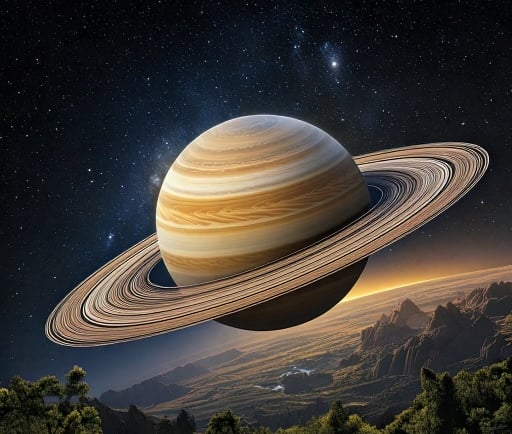The Future of Rings: The Disappearing Spectacle of the Planet with the Most Moons


The Enigmatic Rings of the Planet
In our solar system, the majestic rings of the outer planets capture the imagination of astronomers and enthusiasts alike. While Jupiter, Saturn, Uranus, and Neptune boast distinct ring systems, Saturn is commonly celebrated for its stunning display. However, intriguing data suggests that the planet with the most moons may face significant changes in its ring structure in the coming eons.
A Glimpse into the Cosmic Future
According to scientific projections, the rings of this celestial body may begin vanishing within approximately 100 million years. This prediction raises compelling questions about the dynamics of planetary rings and the future of the moons that inhabit the gravitational sphere of influence surrounding the planet. As we explore this phenomenon, it’s crucial to understand the forces at play and the implications for the celestial environment.
The Role of Moons in Ring Stability
The interplay between the planet's moons and its rings is a fascinating aspect of astrophysical studies. The gravitational pull of these moons contributes significantly to the stability and structure of the ring system. As moons continue their orbits, they interact with ring particles, shaping the rings and influencing their evolution over time. However, should the delicate balance of forces shift, it could hasten the inevitable decline of the rings, leading to their eventual disappearance.
The increasing age of the rings may further contribute to their vanishing. As material from the rings is constantly being drawn towards the planet, collisions between particles may cause erosion and degradation of the ring structure. Following this natural cycle, researchers anticipate that within the next hundred million years, we may witness the rings transitioning into a faint reminiscence of their former glory.
This phenomenon not only captivates astronomers but also opens doors to understanding the life cycle of other planetary rings across the universe. By studying the planet with the most moons and its rings, scientists can draw parallels to other celestial bodies, leading to greater insights into the complexities of planetary systems.
In conclusion, the fate of the rings around the planet with the most moons serves as a poignant reminder of the transient beauty of our universe. While the rings may be on a path toward obsolescence, they continue to inspire scientific discovery and speculation about the future of such spectacular features in the cosmos. As we advance our observational technologies and exploring capabilities, we can only hope to witness the remnants of these captivating rings before they fade into the annals of cosmic history.
